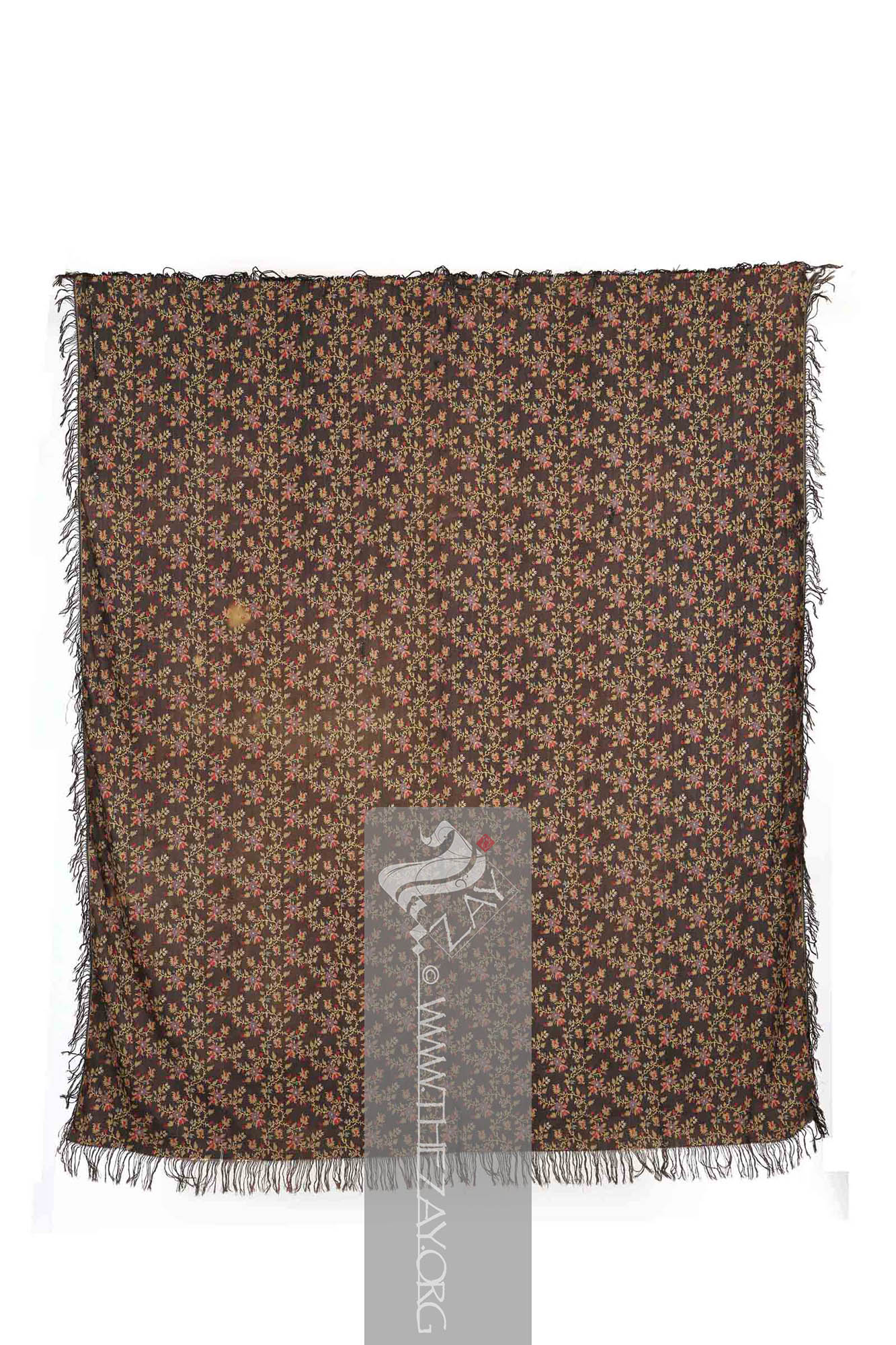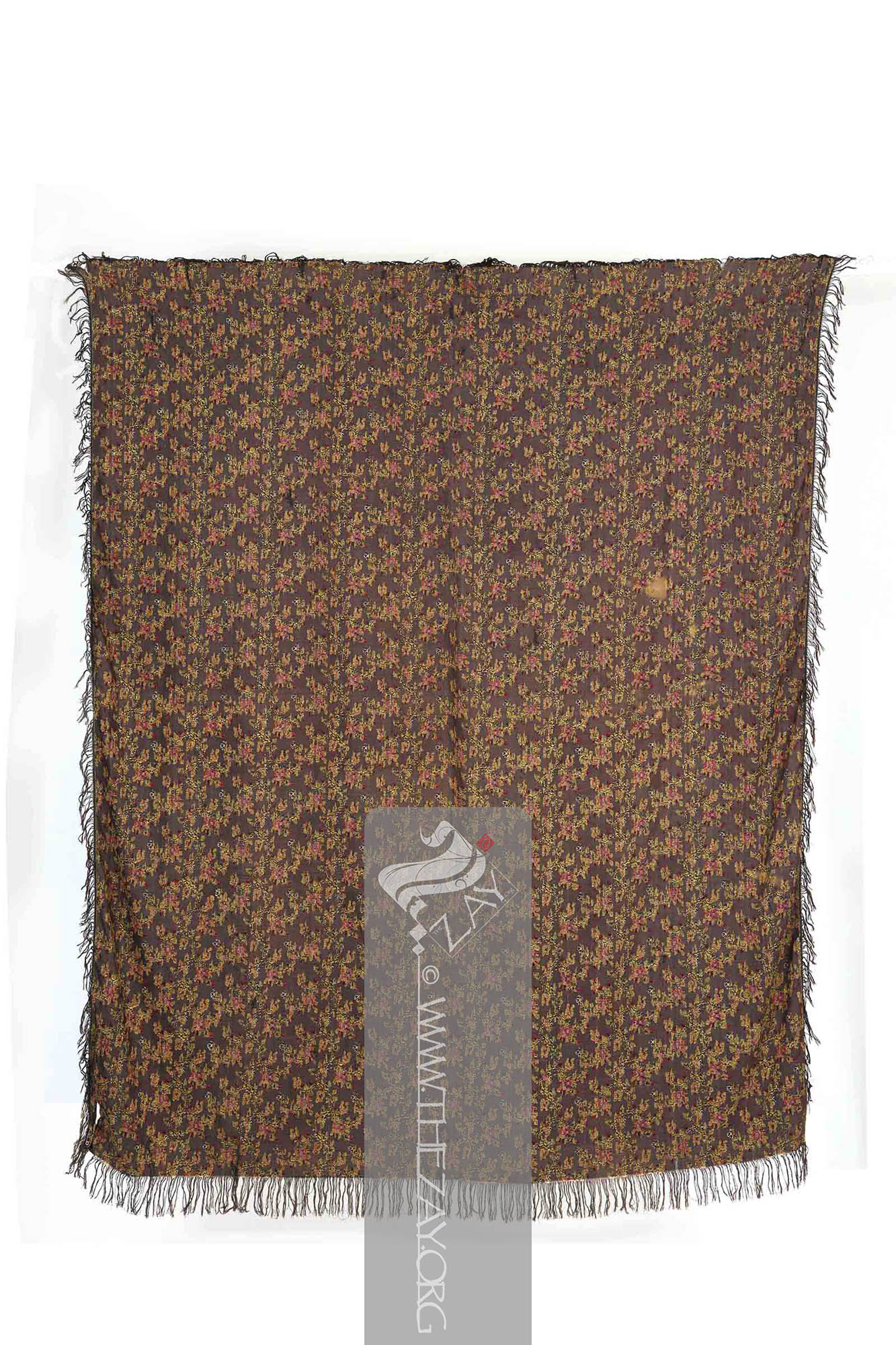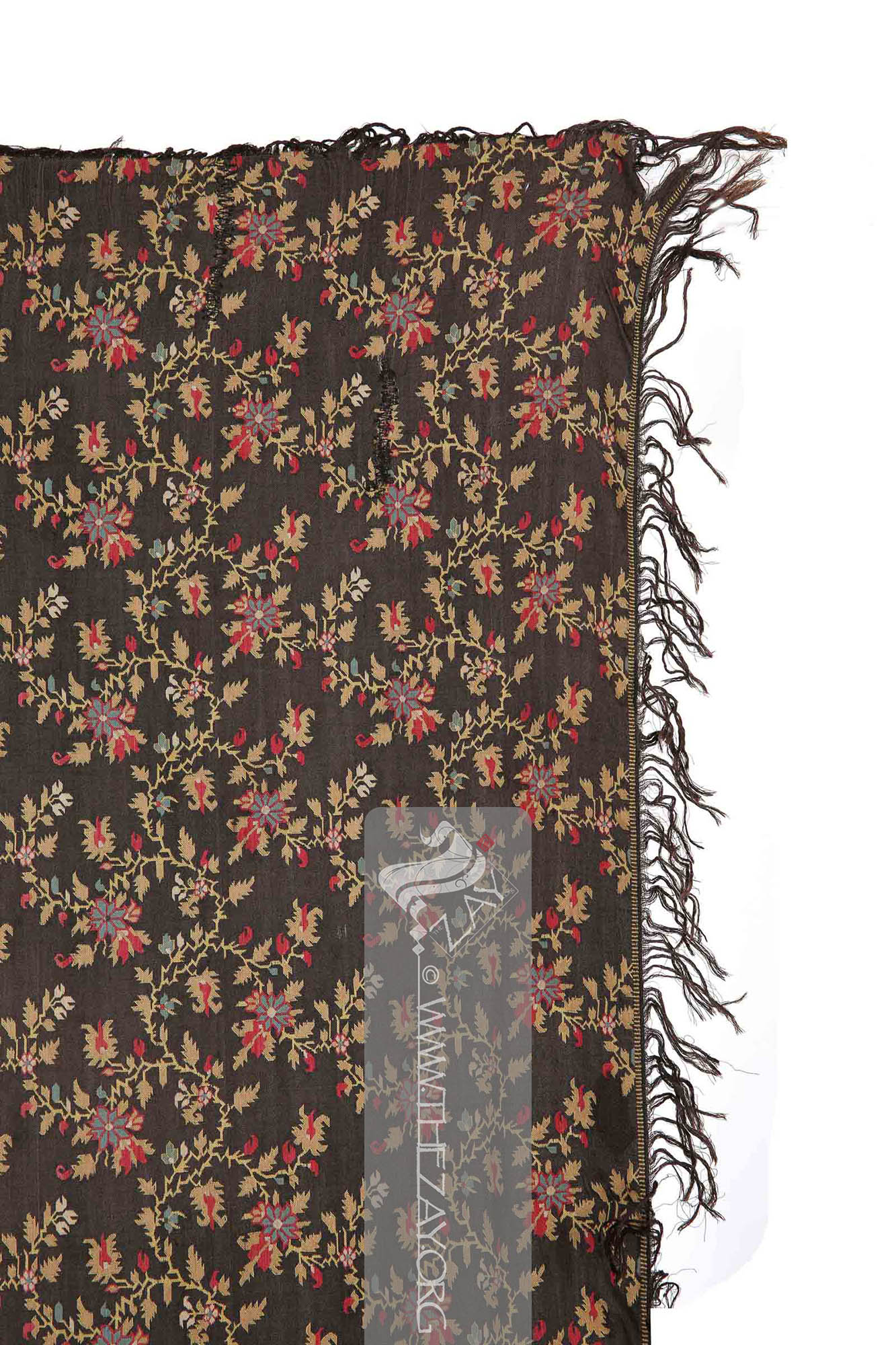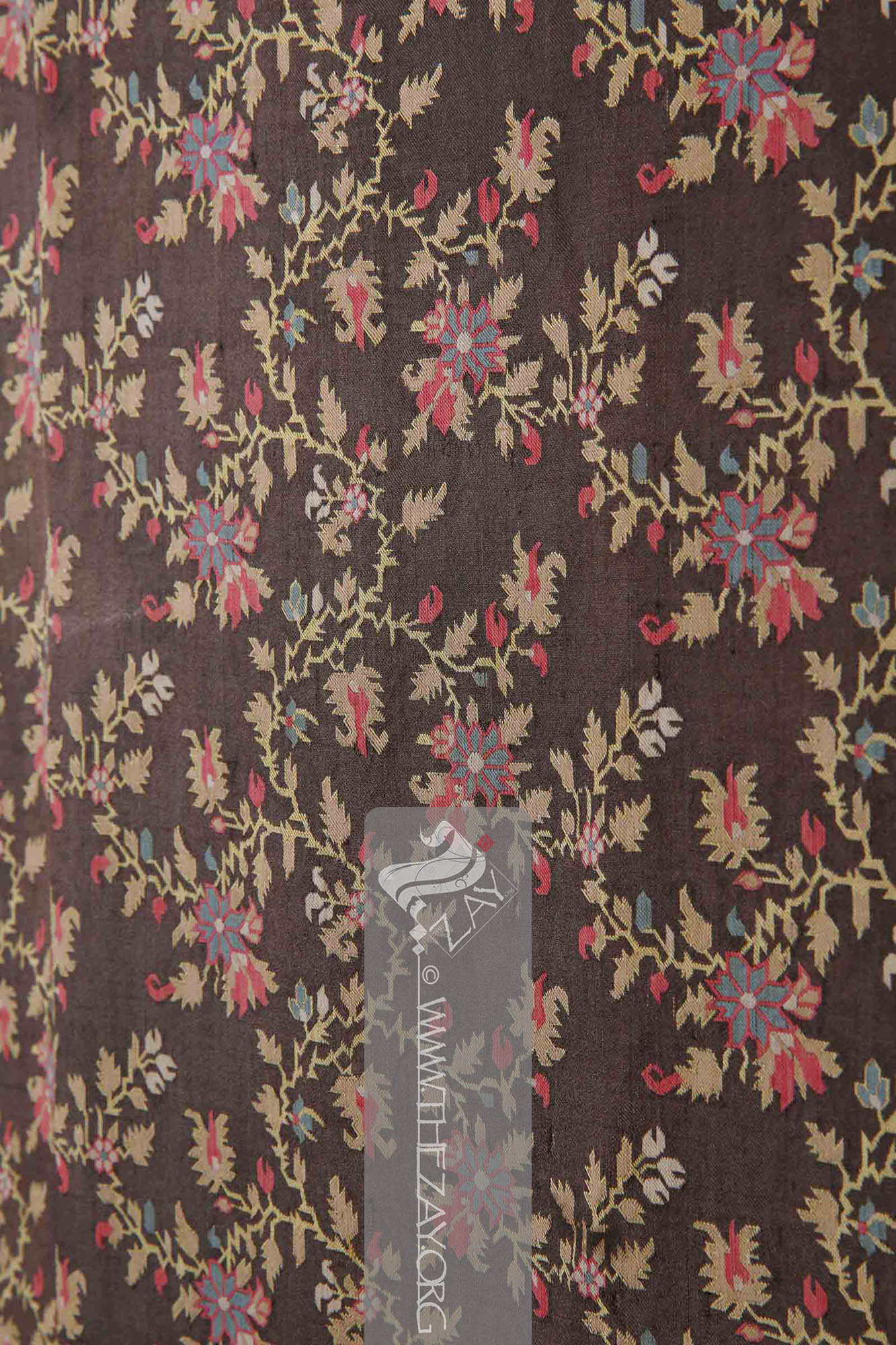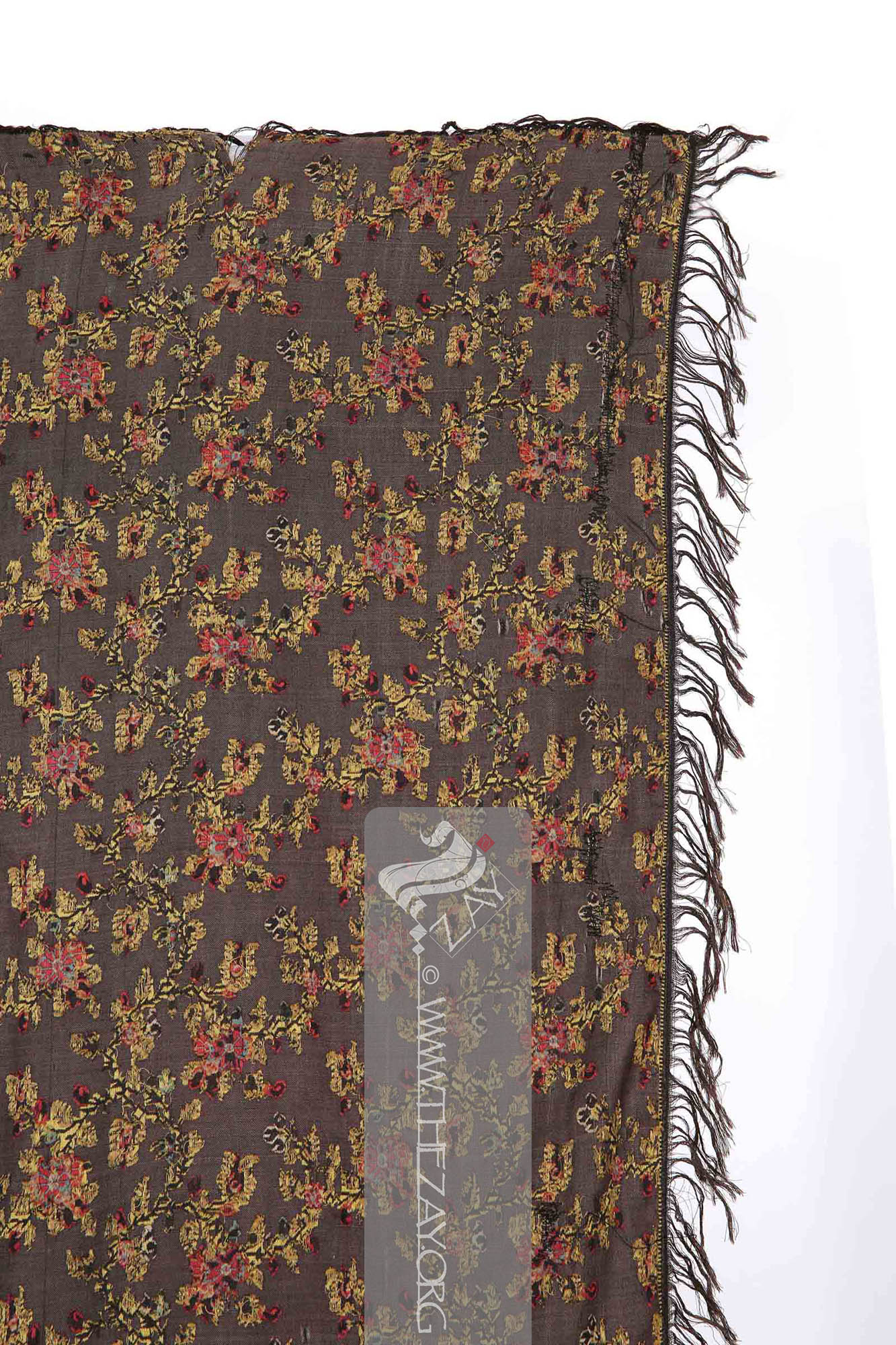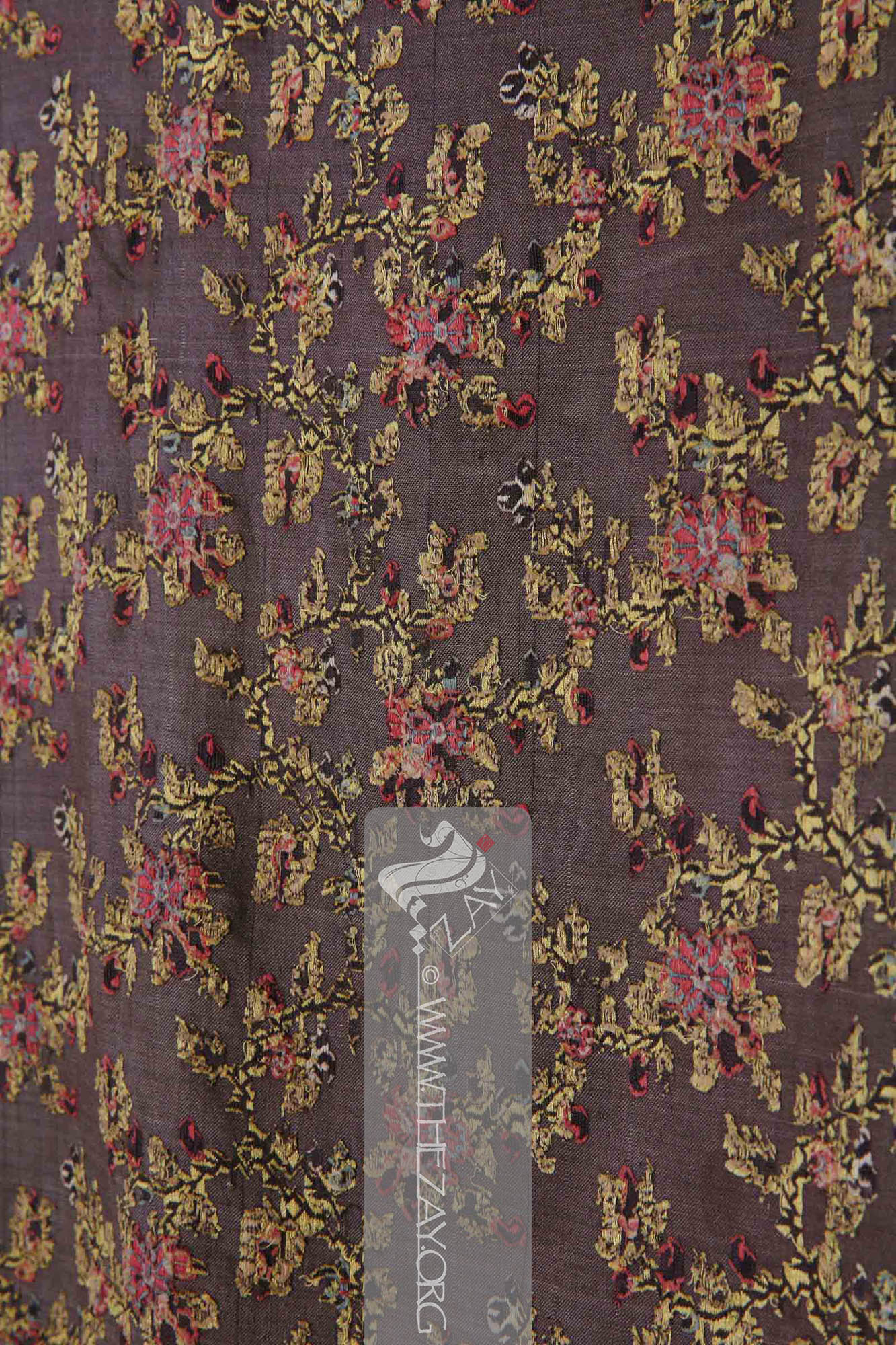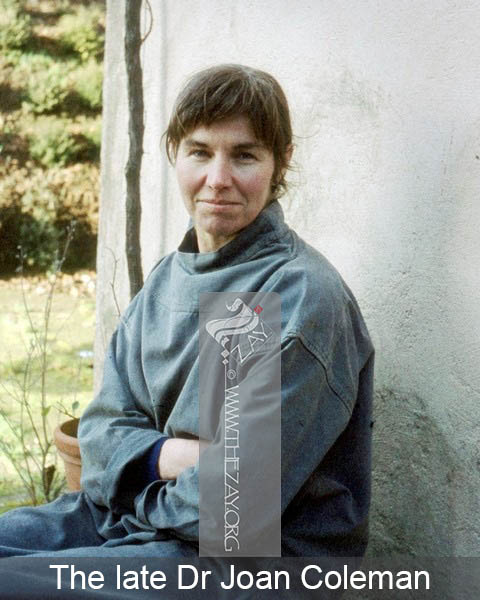Object History This brown square (
shawl
Shawl: (Persian: shāl from Hindi: duśālā – Shoulder Mantle), a shawl is a South Asian version of a scarf worn or wrapped loosely over the shoulders and is usually made of wool. ) in silk dating back to the early 19th century was originally a part of the Dr Joan Coleman Collection. It was first purchased at a Phillips auction on September 9, 1992. Later, The
Zay
Zay: (Arabic: costume, Pl. azyaā’), a set of clothes in a style typical of a particular country or historical period. Initiative acquired it from Kerry Taylor Auctions in 2020. This
shawl
Shawl: (Persian: shāl from Hindi: duśālā – Shoulder Mantle), a shawl is a South Asian version of a scarf worn or wrapped loosely over the shoulders and is usually made of wool. was part of a set of a trio at the Dr Joan Coleman Collection alongside an ivory silk square
shawl
Shawl: (Persian: shāl from Hindi: duśālā – Shoulder Mantle), a shawl is a South Asian version of a scarf worn or wrapped loosely over the shoulders and is usually made of wool. (
ZI2020.500758 EUROPE) which is also a part of The
Zay
Zay: (Arabic: costume, Pl. azyaā’), a set of clothes in a style typical of a particular country or historical period. Initiative collection.
Dr Joan Coleman began collecting shawls in 1976 and developed her lifelong passion for collecting. She was a regular at the London salesrooms of Christie’s, Sotheby’s, and Phillips – three of the most outstanding auction houses of the period in the world – getting to know the dealers and learning in the process. She acquired vast knowledge and dedicated hours carefully cataloguing her ever-growing collection. She intended to loan her collection to different museums and institutions for the benefit of learning and education. Her collection is one of the largest and the finest private
shawl
Shawl: (Persian: shāl from Hindi: duśālā – Shoulder Mantle), a shawl is a South Asian version of a scarf worn or wrapped loosely over the shoulders and is usually made of wool. collections to have ever graced the world with shawls ranging from Kashmir,
Paisley
Paisley: (Scottish Gaelic, Pàislig: a town in Scotland), often called buta, boteh, amli, or kalgi in the subcontinent and kazuwah in Arabic, is a Persian tear drop motif with a curved end specially in textiles. Its popularity and subsequent local production in 18th century at Paisley are responsible for its nomenclature., Edinburgh, Norwich, France, and Iran.
Object Features This is a brown (
burnt_umber
Burnt_Umber: (Latin: umbra – shadow; also Italian: terra d’ ombra – earth of Umbria), is a dark earth brown pigment created by heating natural raw umber originally extracted in Umbria, Italy. It is a range of different shades of brown from medium to dark in value and greenish to reddish in hue.) square silk
shawl
Shawl: (Persian: shāl from Hindi: duśālā – Shoulder Mantle), a shawl is a South Asian version of a scarf worn or wrapped loosely over the shoulders and is usually made of wool. in (
satin
Sātin: (Arabic: Zaytuni: from Chinese port of Zayton in Quanzhou province where it was exported from and acquired by Arab merchants), one of the three basic types of woven fabric with a glossy top surface and a dull back. Originated in China and was fundamentally woven in silk.) weave manufactured in Norwich c.1835.
It is embellished with gold, pink and blue wool. The lack of a distinct border in this
shawl
Shawl: (Persian: shāl from Hindi: duśālā – Shoulder Mantle), a shawl is a South Asian version of a scarf worn or wrapped loosely over the shoulders and is usually made of wool. makes it unique amongst other contemporary shawls of similar patterns. The only semblance of any border in this
shawl
Shawl: (Persian: shāl from Hindi: duśālā – Shoulder Mantle), a shawl is a South Asian version of a scarf worn or wrapped loosely over the shoulders and is usually made of wool. is the fringed tassels around it on all four sides.
The entire field or body of the
shawl
Shawl: (Persian: shāl from Hindi: duśālā – Shoulder Mantle), a shawl is a South Asian version of a scarf worn or wrapped loosely over the shoulders and is usually made of wool. has an intricately woven design of floral arrangements along several central meandering vines. The foliage and the vines are woven primarily in golden wool while the flowers and other floral elements are mostly in pink and blue.
The body of the
shawl
Shawl: (Persian: shāl from Hindi: duśālā – Shoulder Mantle), a shawl is a South Asian version of a scarf worn or wrapped loosely over the shoulders and is usually made of wool. is strewn with several darning mostly in black threads testifying to its wear and tear over the years. Square shawls like this were usually folded diagonally in half and were draped around the shoulders and were a very fashionable accessory during the first quarter of the 19th century.




